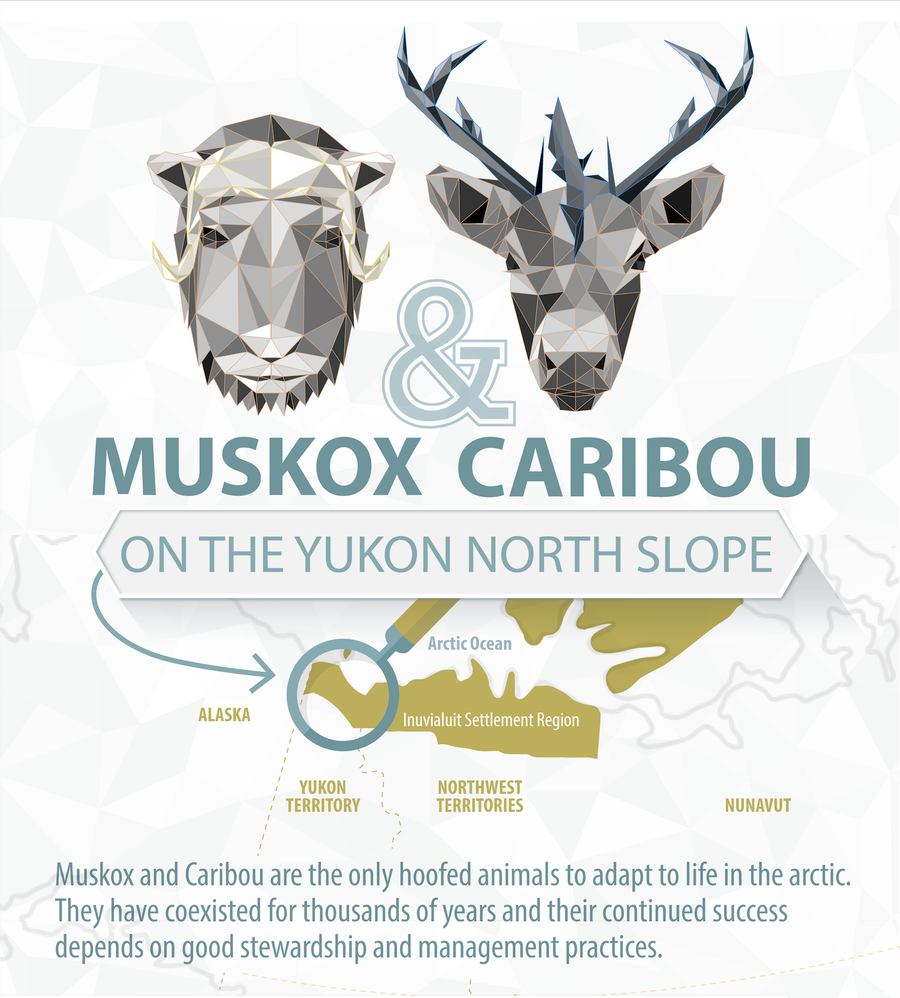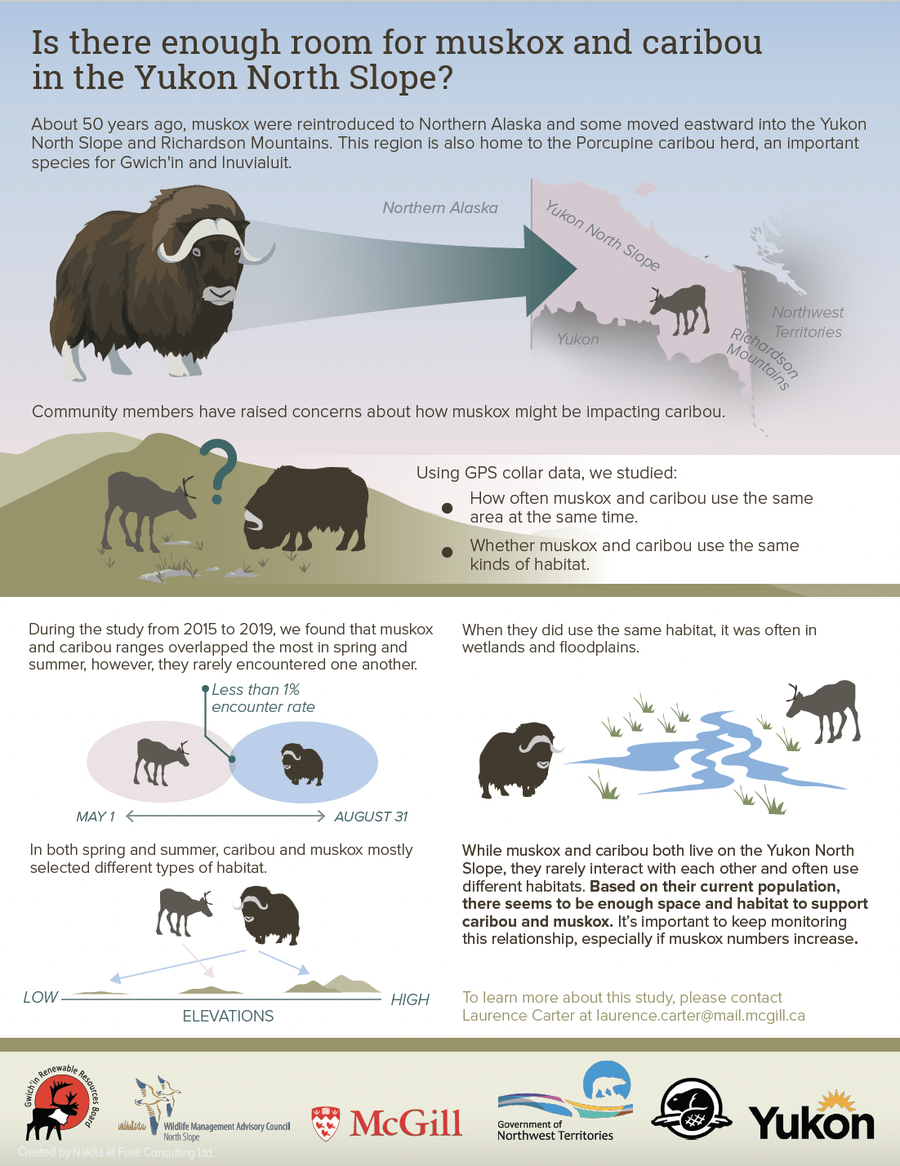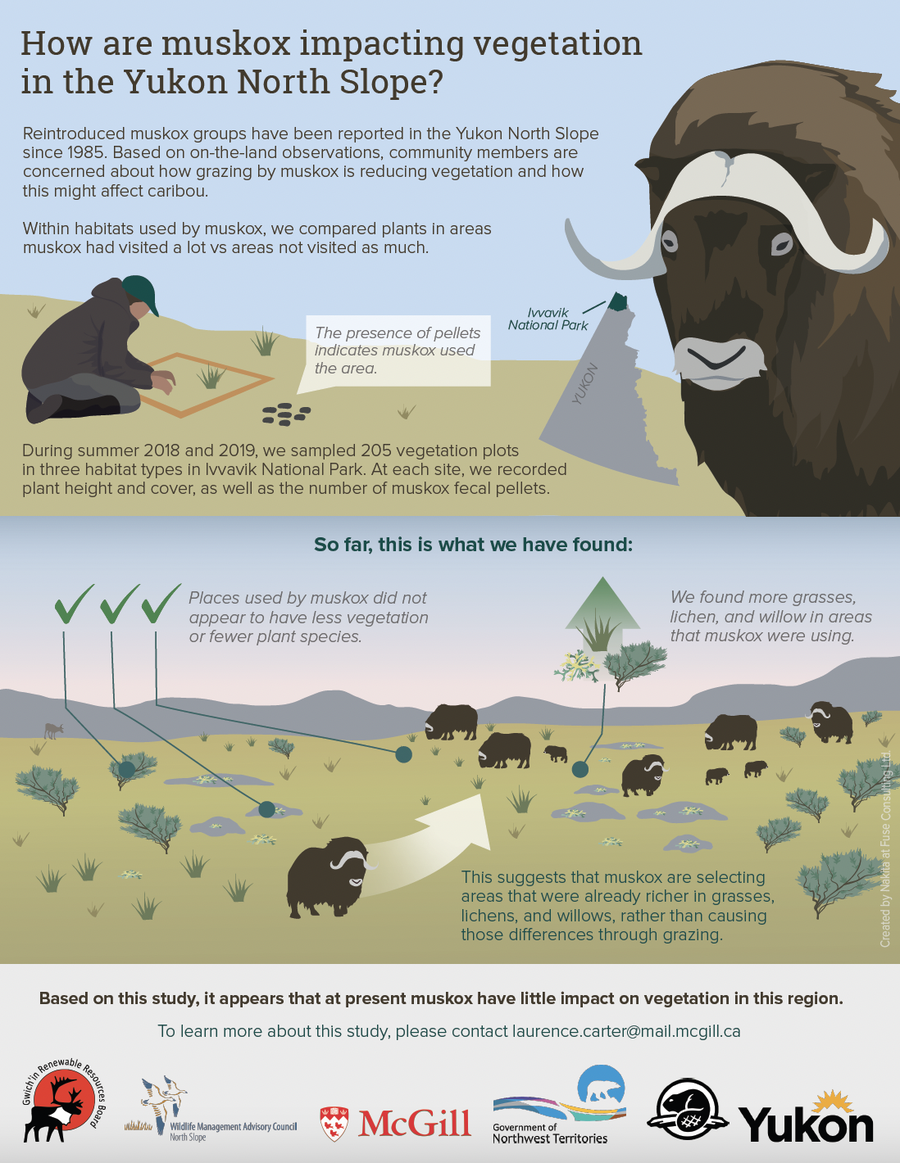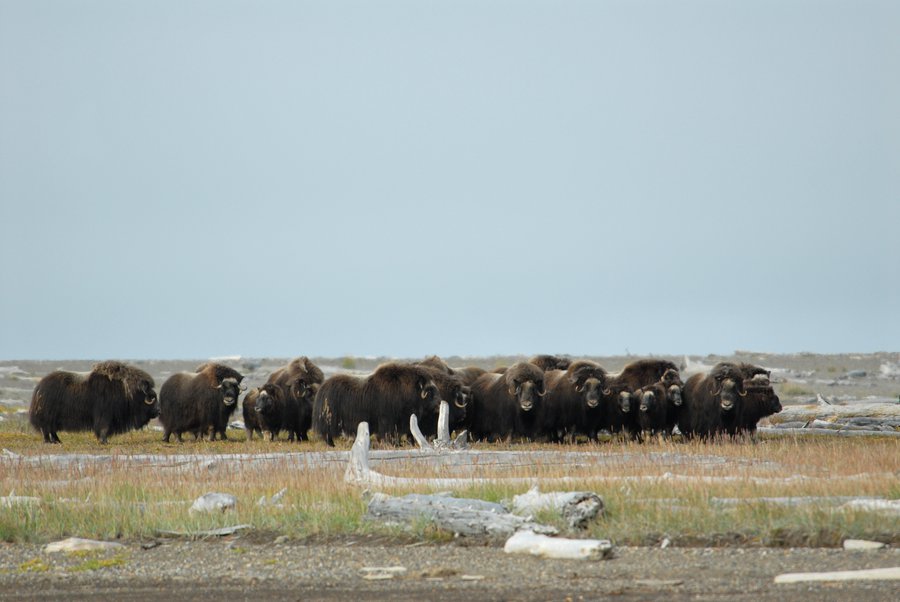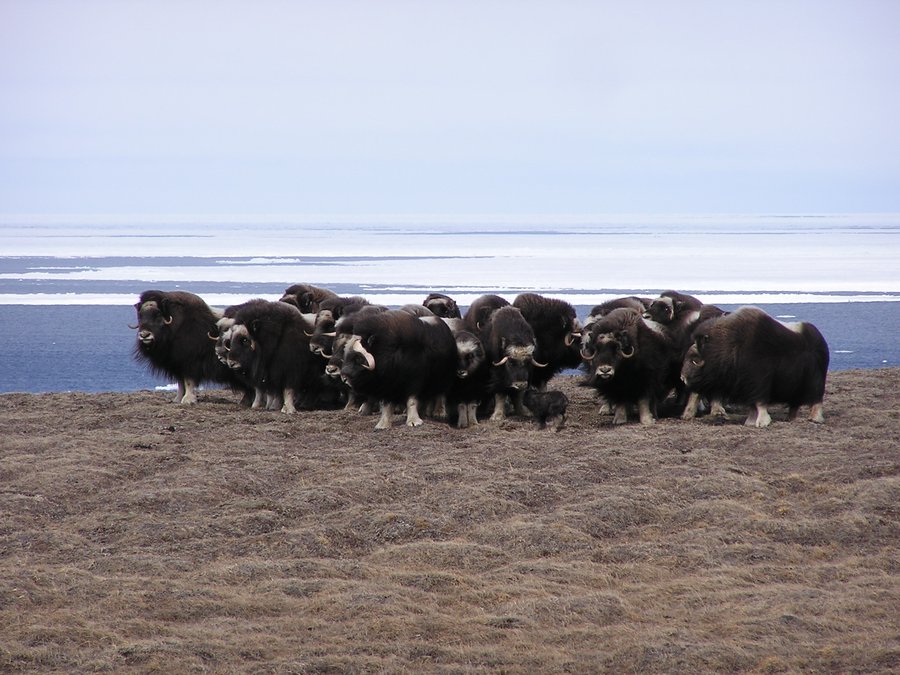Umingmak (Muskox)
Muskox are one of the oldest surviving herbivores on the planet. While they have historically existed on the Yukon North Slope since the last ice age, they disappeared in the mid-1800s, likely due to increased hunting pressure that came with a surge in Arctic visitors around that time. However, after a successful reintroduction a hundred years later, muskox are once again a part of the Yukon North Slope landscape, with a few hundred animals distributed in small groups across the region.

